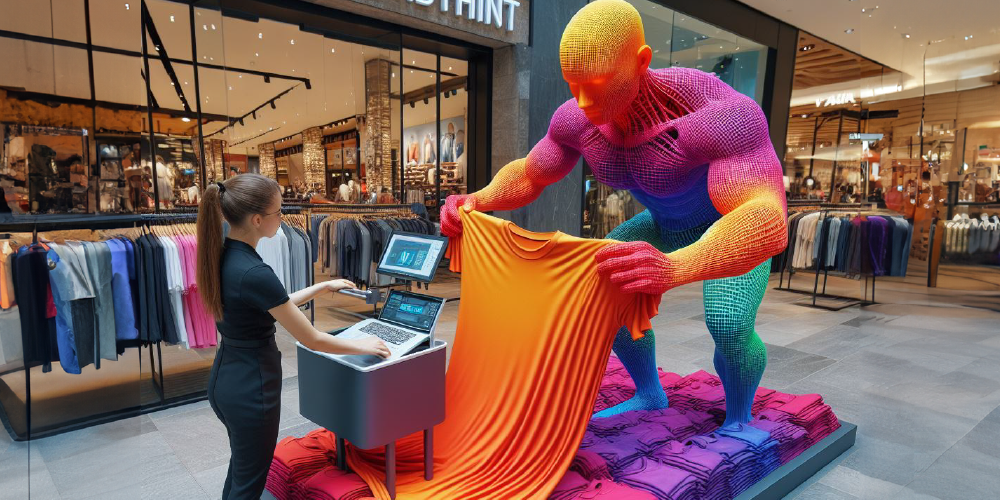It is no secret that content marketing is useful for every industry, whether B2B or B2C. But the eCommerce industry can leverage a unique advantage wherein you can guide shoppers through the sales or purchase funnel. Smart content backed by a sound strategy can influence buyers, encourage sales, promote products, reassure hesitant customers, and more. Read on to know more about creating an effective content marketing sales funnel.
What is a Sales Funnel?
The Sales Funnel or the Buying Cycle shows the various stages a potential buyer goes through when they are making a purchase of any kind, whether online or offline. Generally speaking, there are four stages: Attention, Interest, Desire, and Action or AIDA for short. There is an additional stage called Post-purchase or Brand Advocacy, which is quite crucial for eCommerce retailers seeking to improve their credibility.
Below is a run-down of a customer’s buying journey in the AIDA model:
- Attention: The customer is busy with everyday life and becomes aware that your eCommerce store exists.
- Interest: Here, the customer is keen on buying a product and is researching on what is the best choice.
- Desire: At this stage, the customer wants the product or service you are offering as they are convinced it will help with their particular problem.
- Action: The customer is confident about making a purchase and is deciding whether the price is right.
- Post-purchase/Brand advocacy: After the sale is made and the product is received, the customer reflects on their purchase. Here, social shares, product reviews, and interaction with customer service in case of delivery difficulties and product defects play a key role in customer engagement.
Strategies and Types of Product Content
Now, let us dive into the details of fine-tuning your content marketing strategy according to the sales funnel. During each stage of the customer’s journey, we will take into consideration their frame of mind, your marketing goals, the types of content, and best practices.
-
Attention – First impressions of the brand. The customer is going about their daily lives, and they become aware of the existence of a particular eCommerce website. At this stage, customers may become aware of a problem they may never know they had or that a solution to their problem already exists.
-
Goals:
-
Convert cold traffic into new customers
-
Inform about upcoming sales, products, or campaigns
-
Build brand reputation
-
Customer engagement on social media
-
-
Types of Content:
-
Social media posts
-
Blogs, Vlogs, podcasts on popular topics
-
White papers
-
SEO-optimized posts using long-tail keywords a.k.a. key phrases
-
-
Best Practices:
-
Create content that is memorable and shareable
-
Attract attention
-
Invest in visually appealing content (Infographics that link to white papers)
-
Effective back-linking
-
Avoid a sales pitch
-
-
-
Interest – This stage is an important transition as the brand is no longer a stranger. The customer is aware of the products and services offer a potential solution to their needs. At this point, the customer is researching and evaluating.
-
Goals:
-
Demonstrate value
-
Establish the brand as superior
-
Acquire sign-ups and subscriptions
-
-
Types of Content:
-
Quizzes
-
Look/Style posts (Fashion, cosmetics, etc.)
-
Video tutorials and product videos
-
Emailers and newsletters
-
-
Best Practices:
-
Identify pain-points of the customer
-
Offer solutions to these problems
-
Guide customers to make a purchase
-
Create longer, in-depth, informative content
-
Convince customers to shop with you instead of the competition
-
Establish the brand as the go-to authority for the niche
-
-
-
Desire – Customers want to buy the product or service you are offering, but they are considering possible alternatives. Here, they have identified that a problem and its subsequent solution exists, but they are hesitant in making a purchase. Possibly, due to price, credibility, trust, etc. The customer is at the door, and it’s time to close the sale.
-
Goals:
-
Aid buying decision
-
Strengthen the need for the product
-
Project the brand as the best possible option
-
-
Types of Content:
-
Buying guides and product category opinion pieces (E.g., Best smartphones under 20K)
-
Product reviews
-
Testimonials
-
Product descriptions
-
Photos and videos of the product
-
-
Best Practices:
-
Highlight reasons to buy
-
Reflect USPs
-
Showcase what features are more important than others to reinforce that you are an expert authority in your niche
-
How to use the product
-
Address any purchase order, delivery, and other shopping concerns (FAQs)
-
-
-
Action – Here, the customer has decided that he is willing to buy the product and is finalizing whether the price being charged is worth the amount.
-
Goals:
-
Promote the store’s advantage
-
Facilitate advantages
-
Drive traffic to specific pages
-
-
Types of Content:
-
Price guides and comparison charts
-
Product reviews
-
Helpful widgets (Direct checkout/Buy now)
-
-
Best Practices:
-
Concentrate on product videos whenever possible
-
Embed Call-to-Action widgets in the content
-
-
-
Post-purchase – Once the customer has made the purchase, they are evaluating their entire buying journey. Also, they are anticipating the arrival of the order.
-
Goals:
-
Improve customer service
-
Improve loyalty and repeat business
-
Increase social media referrals
-
Positive user reviews
-
-
Types of Content:
-
Surveys
-
Invitations / Emailers to provide a review
-
Rewards / Gifts
-
Transactional emails (receipt) with specialized CTAs for possible upsell or survey
-
-
Content marketing isn’t just advertising and brand awareness. Many feel it is an extension of the original sales pitch created by traditional marketing channels, but it’s much more than that.
Content marketing in the hands of a master can be the tool you need to perform a surgical strike and shepherd customers through the sales funnel to increase time on site by 900%, increase ROI by 171%, increase page visits by 100%, and increase emailer open rates by 111%.
If you seek to increase your eCommerce traffic and sales, get in touch with our sales team at connect@old.iksula.brandfanatics.io





